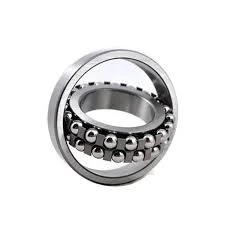
10 月 . 20, 2024 12:09 Back to list
tapered roller bearing vs spherical roller bearing
Tapered Roller Bearings vs. Spherical Roller Bearings A Comprehensive Comparison
When it comes to choosing the right type of bearings for industrial applications, understanding the differences between tapered roller bearings and spherical roller bearings is crucial. Both types serve vital functions in machinery and equipment but are designed for different applications and operating conditions. This article seeks to highlight the key differences, advantages, and applications of both bearing types to assist in making informed decisions.
Structure and Design
Tapered roller bearings are constructed with conical rollers that are arranged between an inner race, an outer race, and a cage. This unique design allows the bearing to support both radial and axial loads, making them ideal for applications where axial load capacity is essential. The tapered shape of the rollers facilitates better alignment and reduces friction, allowing for smoother operation.
In contrast, spherical roller bearings feature a design with barrel-shaped rollers that can accommodate misalignment. The rollers are positioned between two rings, providing a large contact area that can handle heavy radial loads and moderate axial loads in both directions. The ability to tolerate misalignment makes spherical roller bearings particularly useful in conditions where the shaft may be subjected to bending or twisting.
Load Handling Capacity
One of the primary differences between these two bearing types is their load handling capabilities. Tapered roller bearings are designed to carry significant axial loads thanks to their contact angle, which increases the load-carrying capacity in the axial direction. They tend to excel in scenarios involving heavy axial loading, such as in gearboxes, automotive applications, and truck hubs.
On the other hand, spherical roller bearings are built to manage heavy radial loads and have better shock load resistance. They can also accommodate some degree of axial loads but are not as effective as tapered roller bearings in this regard. This makes spherical roller bearings suitable for applications in mining, construction machinery, and large industrial equipment where heavy radial loads are prevalent.
tapered roller bearing vs spherical roller bearing

Misalignment and Installation
Misalignment is a critical factor in bearing performance, and here is where spherical roller bearings really shine. The self-aligning capability of spherical roller bearings allows them to compensate for misalignment due to shaft deformation or mounting errors. This is particularly advantageous in applications involving dynamic loads or rough operating environments.
Tapered roller bearings, while precise, require careful alignment during installation. If not correctly aligned, they can suffer from premature wear and tear, which may lead to bearing failure. Their installation can be slightly more laborious than that of spherical roller bearings, so maintenance and alignment checks are crucial to ensure longevity.
Applications
Both tapered and spherical roller bearings find their place in a wide range of applications. Tapered roller bearings are frequently used in automobiles, machine tool spindles, and industrial gearboxes where axial load handling is paramount. Their ability to carry high-speed loads also makes them a popular choice in the aerospace sector.
Conversely, spherical roller bearings are commonly employed in applications that involve heavy machinery, such as crushers, conveyor systems, and rolling mills. Their ability to handle misalignment makes them well-suited for environments where vibration and shock loads are expected, such as timber processing and metalworking industries.
Conclusion
In summary, choosing between tapered roller bearings and spherical roller bearings depends on specific application needs, including load types, alignment requirements, and installation conditions. Tapered roller bearings are essential for applications that demand high axial load capacities, while spherical roller bearings are ideal for conditions where misalignment is a concern. Understanding these differences and the unique advantages of each bearing type can lead to improved performance, reduced downtime, and enhanced durability of machinery and equipment. Selecting the right bearing ultimately translates to greater efficiency and reliability in industrial operations.
Latest news
-
Unlocking Efficiency with Spherical Roller Bearings
NewsOct.29,2024
-
The Ultimate Guide to Thrust Ball Bearings
NewsOct.29,2024
-
The Power of Thrust Roller Bearings: Engineered for Excellence
NewsOct.29,2024
-
The Power of Deep Groove Ball Bearings for Your Application Needs!
NewsOct.29,2024
-
The Power and Performance of Cylindrical Roller Bearings
NewsOct.29,2024
-
High-Quality Ball Bearing Manufacturing Machines
NewsOct.29,2024
